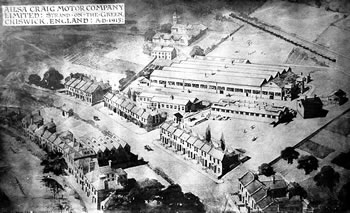70th Anniversary of Thames Road Bombing |
|||||
Andrew Ross takes us back to the night when 1000lb landed on Chiswick
Today, 21st September 2010, marks the 70th anniversary of the 1000lb parachute mine bomb that exploded on the Thames Road Recreation Ground. At 2.30am in the night of 21st September 1940 in the London Blitz a 1000lb parachute bomb exploded on the recreation ground at Thames Road, Strand on the Green, Chiswick. It destroyed 41 houses but killed only one person, Harold Linford. He was the chief engineer of the Ailsa Craig Motor Co. Ltd (see picture). The Luftwaffe knew that during the First World War the Ailsa Craig factory had been used as a National Munitions Factory to produce 4 ½” gun shells, 10,000 a week. But after the war the factory had returned to inventing, designing and making the Ailsa Craig marine diesel engines for which it was world famous. But the Germans assumed it still made munitions. So it was a target. Flying up from their bases in Saint-Nazaire in France, the Dornier and Heinkel bombers followed the river Thames but when they got to Kew and Chiswick that night they found the area shrouded in low, dense fog. They had to rely on dead reckoning to navigate. Londoners could only hear the drone of aircraft overhead and the wailing moan of air-raid sirens for them to take cover in the Anderson shelters in the back gardens behind Thames Road. Since the start of the Blitz in August 1940 the Germans had been puzzled why 10% of these huge bombs were not exploding. They then realized that they were slowing down on their way through building roofs and rafters and were being deeply embedded in the London clay. By the end of September 1940 there were over 3500 unexploded bombs in London. Soldiers (sappers) took incredible risks to knock out live detonators using only hammers and chisels. The Germans then thought of an answer; to slow the bombs down by dropping them on a parachute. Thames Road was one of the first occasions they tried this idea – and it exploded. In the 1915 architect’s drawing of the Ailsa Craig Motor Co. site, the old Strand on the Green School can be seen and in the background the Waterloo to Hounslow railway line (with a train). In the foreground is Thames Road, with just two cars on it. The river Thames and Strand on the Green is on the left. The recreation ground, where the bomb exploded, is on the right. The buildings on the Ailsa Craig Motor Co site remained until 1982 when the site was sold for housing development and is now Oliver Close. Andrew Ross September 20, 2010 |
